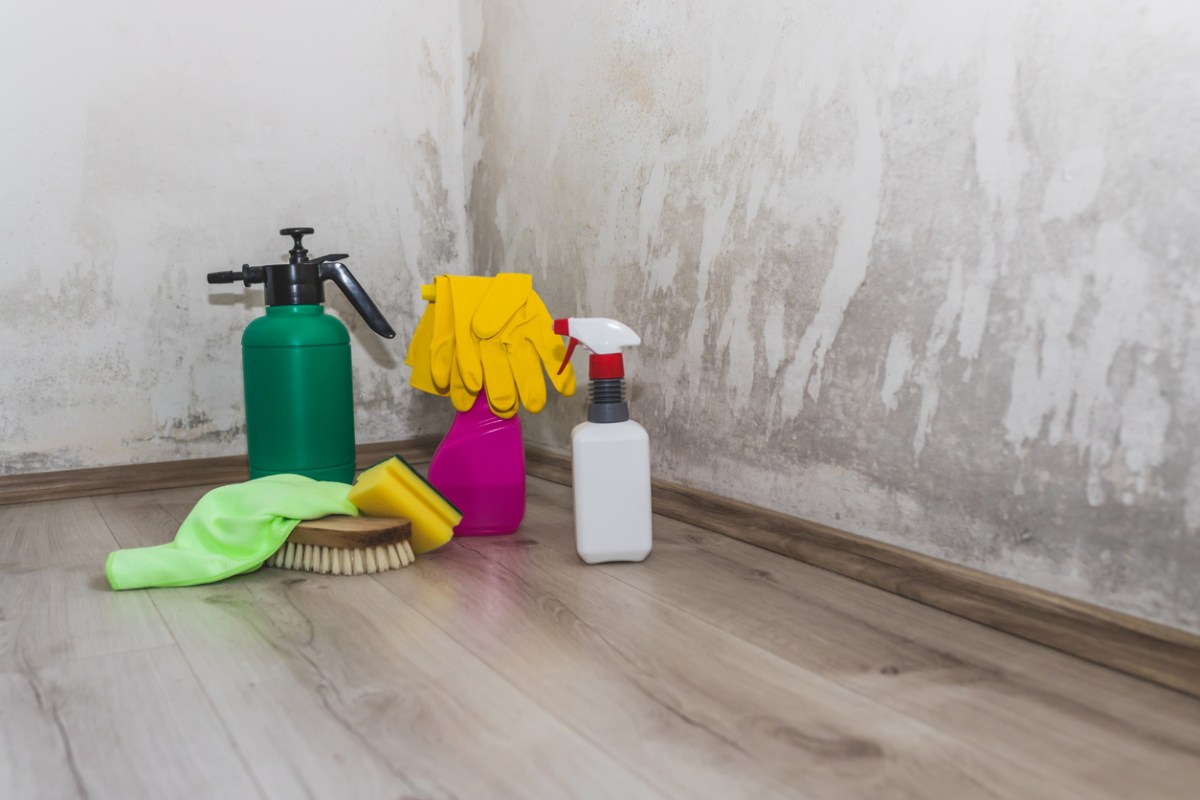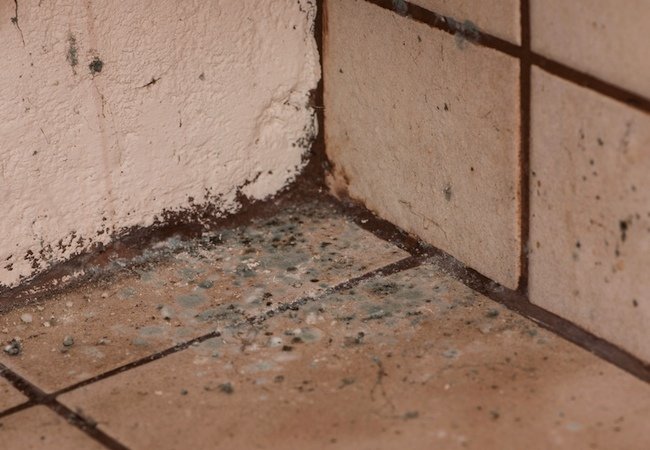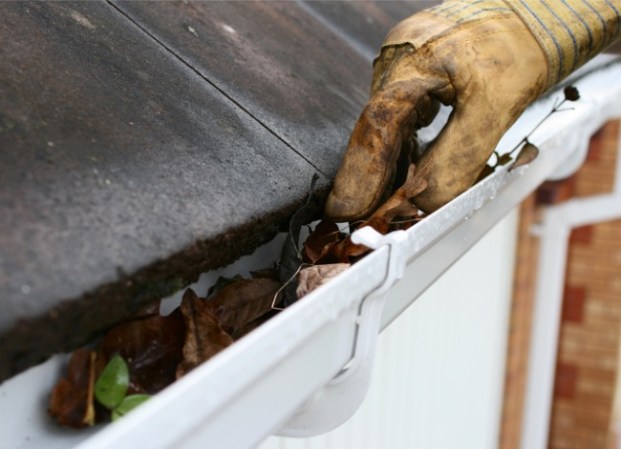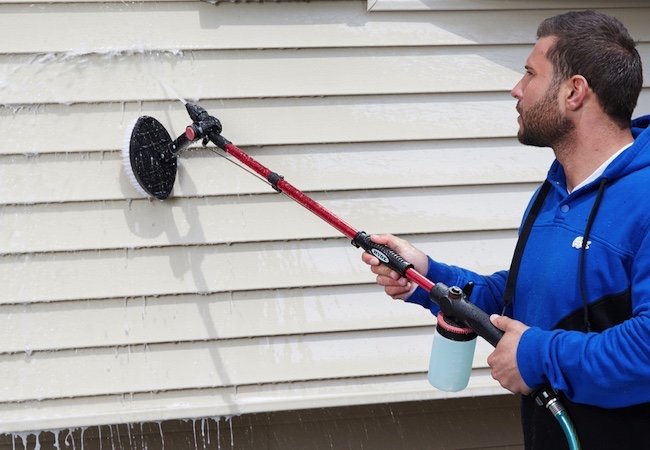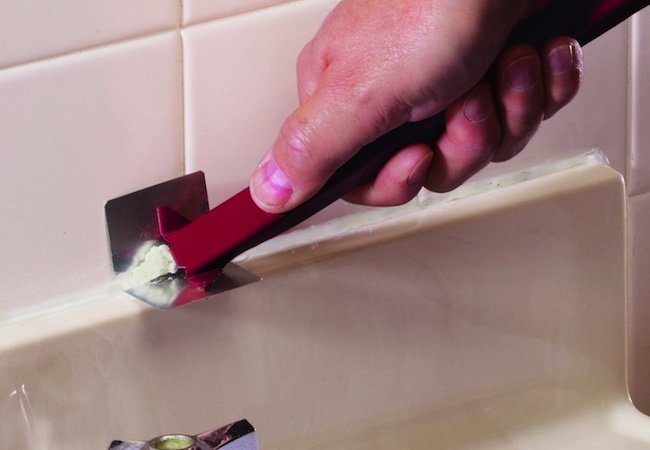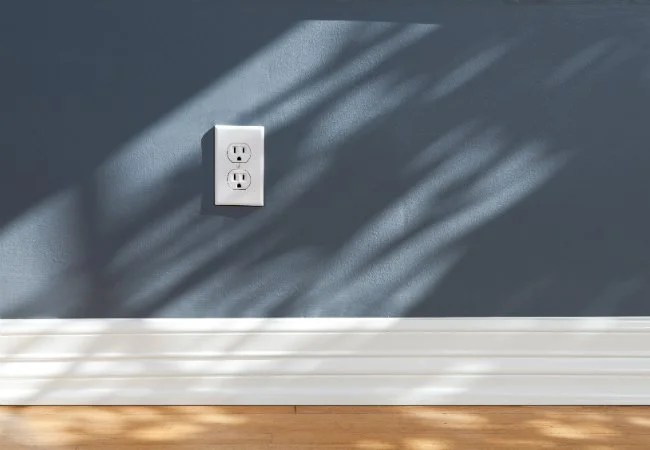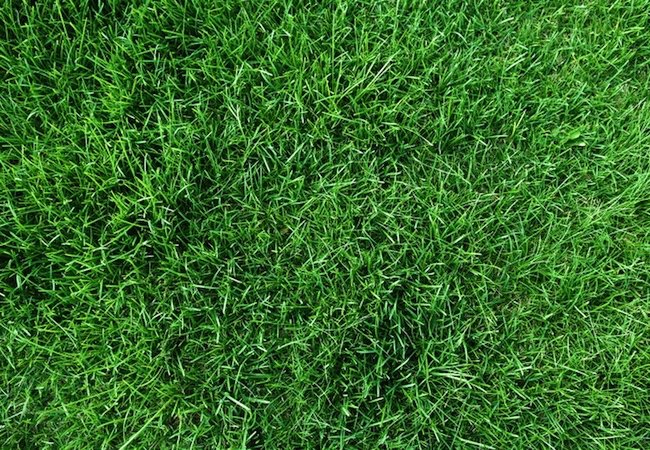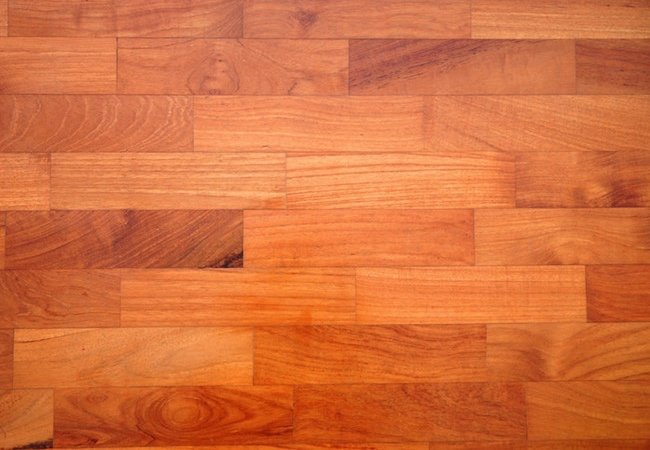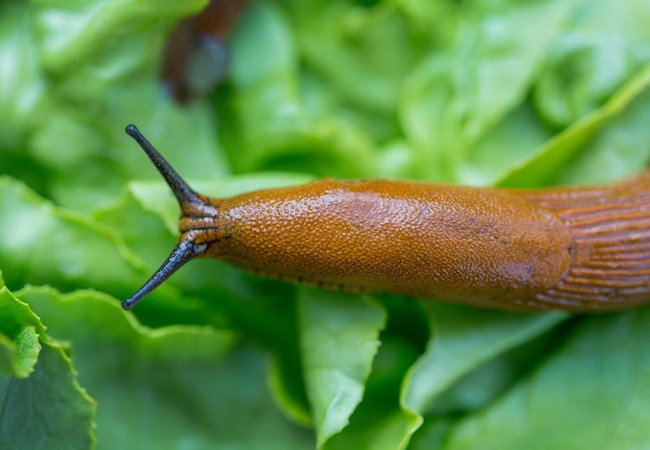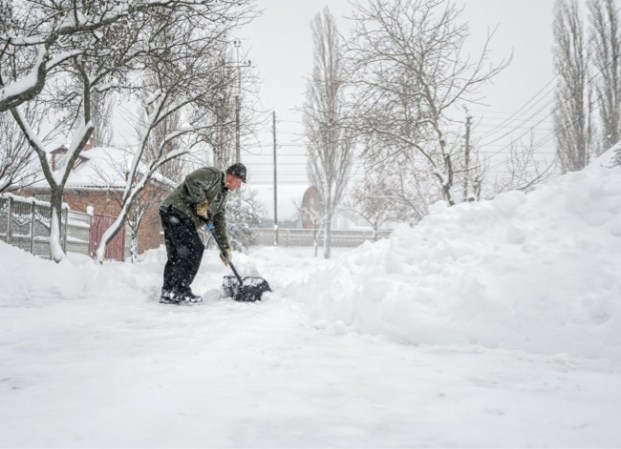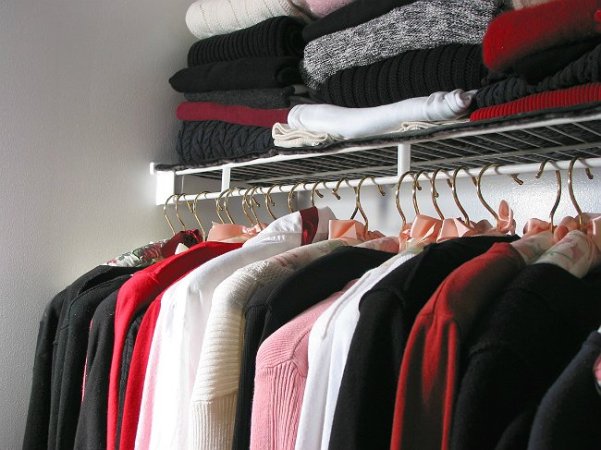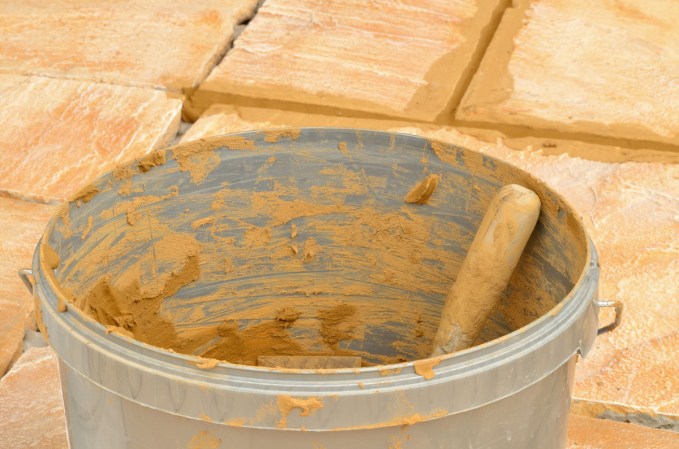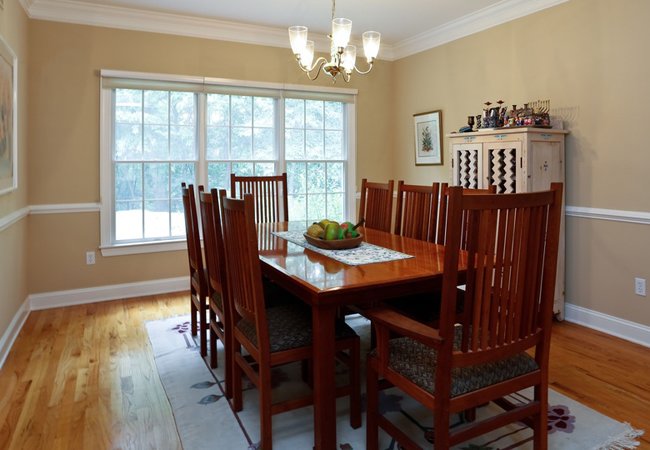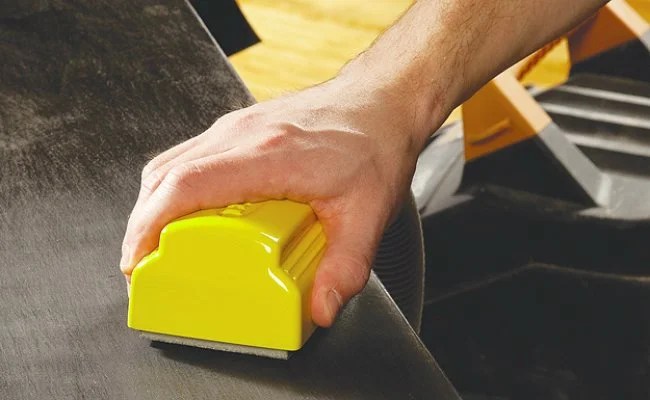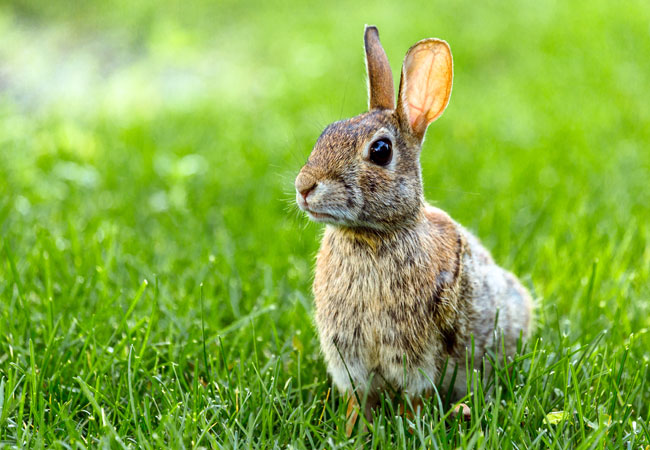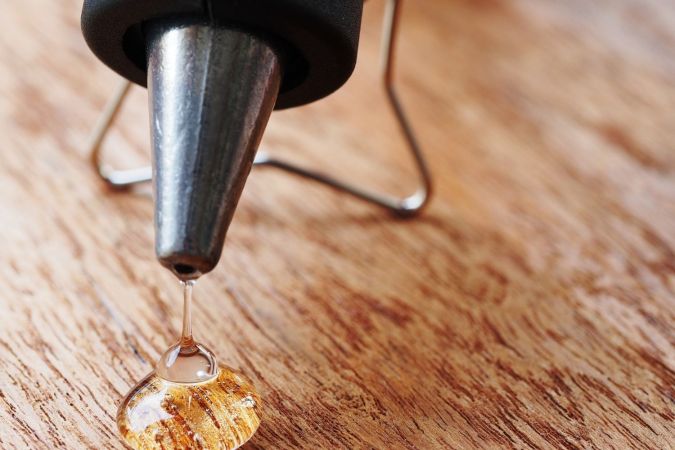We may earn revenue from the products available on this page and participate in affiliate programs. Learn More ›
Knowing how to get rid of a black mold is a skill set every DIYer and homeowner should have in their know-how arsenal. As a naturally occurring and pervasive substance in our world, mold exists in a variety of different forms, many of which are nontoxic and mainly affect those with allergies and asthma.
Black mold, however, is more serious. Exposure to the toxic variety of Stachybotrys chartarum can cause respiratory issues that can be mild or severe. Like most kinds of mold, Stachybotrys chartarum grows at an alarming rate under the right conditions—namely, in places with prolonged exposure to moisture and humidity, such as bathrooms, basements, under-sink cabinets, or recently flooded areas.
For this reason, homeowners should take action at the first sign of black mold, and learn how to remove it before it becomes a destructive force in your home.
Before You Begin Black Mold Removal
Because black mold can form inside walls before spreading to drywall or other surfaces, chances are that homeowners may smell its musty, mildew odor before seeing it. When you do start your inspection, look for black mold’s characteristic slimy texture, dark green-black (sometimes gray) color, and spotted appearance.
Take Health Concerns Seriously
Black mold isn’t a substance to take lightly. This particular form of mold spreads quickly, and the spores (think of them as tiny mold seeds) that it sends through the air can have severe effects on the health of everyone at close range. That’s why you want to rid your home of mold and prevent its return as soon as possible.
Though being allergic to mold is also important to understand the difference between mold allergic reactions and mold poisoning. Mold allergic reactions, while they should be taken seriously, aren’t as severe or dangerous as mold poisoning. Here are some symptoms of mold allergies:
- Cough
- Itchy, watery eyes
- Throat irritation
Some symptoms of mold poisoning, which is more severe, are:
- Brain fog
- Fatigue
- Respiratory infections
- Sinus infections
- Headaches
- Flu-like symptoms
When dealing with mold, be sure to wear a respirator to prevent breathing in the harmful spores. Also, safety glasses, gloves, and disposable coveralls will help control the spread of the spores. It’s also good to take some environmental precautions, such as using plastic sheeting to close off the room while working to remove the mold. Also, using a HEPA air filtration system will catch the spores and prevent them from spreading. Most tool rental shops have these filters available for a daily fee—think of it as cheap insurance.
If someone in your home has recently experienced an unshakable increase in respiratory symptoms (sniffling, sneezing, forgetfulness, congestion, and so on) and you suspect that your home may have a substantial mold infestation, and you suspect the affected area may be quite large, you may be facing a serious mold issue. Under such conditions, hire a licensed mold inspector to examine your house and advise on the best way to mitigate it based on its pervasiveness.
Evaluate the Affected Surface
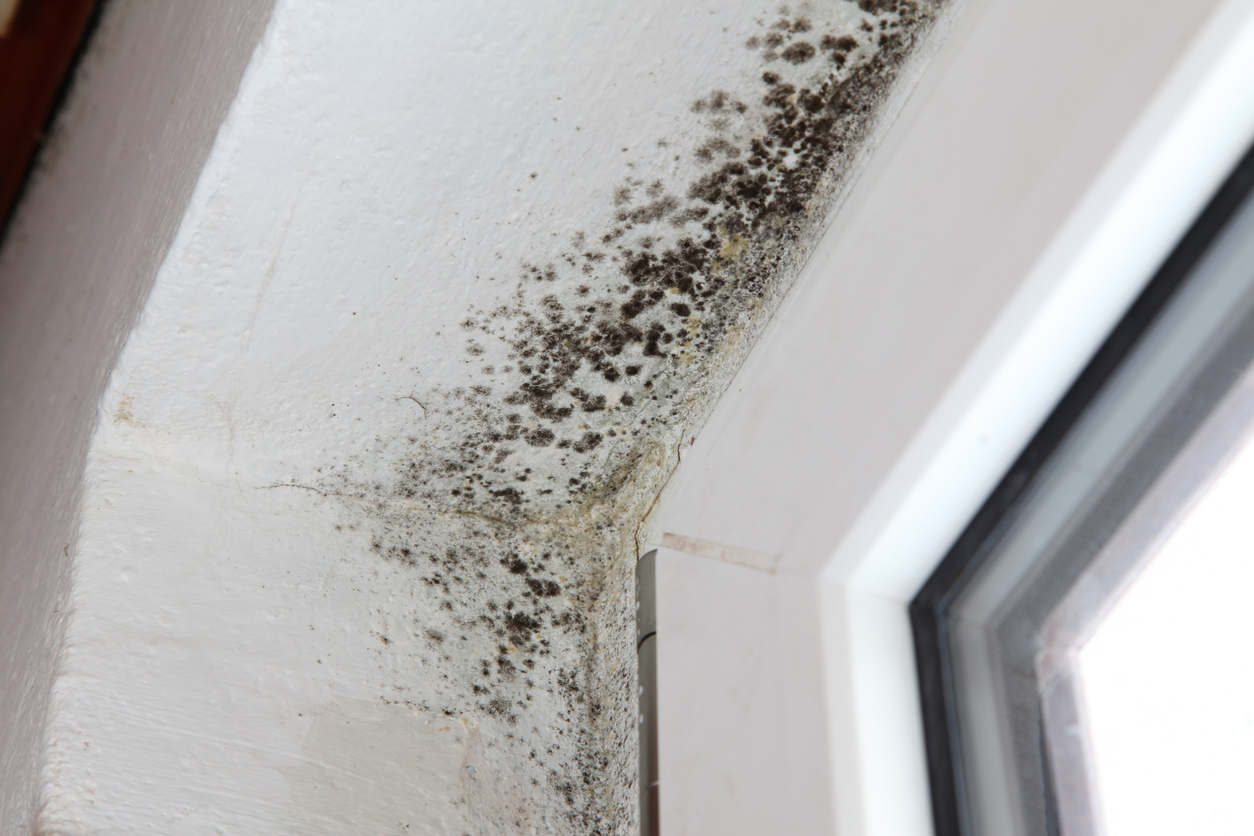
Before tackling black mold removal, DIYers should identify the mold and consider the affected surface. For one, the recommended square footage for DIY mold remediation is 10 square feet and under. Larger than that area and professional services are suggested.
It’s also important to understand that mold doesn’t affect every surface the same way, and the best ways in which to remove black mold vary based on the surface. Mold growing on porous surfaces can be very stubborn and difficult to remove because mold spores dig down into the pores in these surfaces and hang on fiercely. These surfaces include:
However, removing mold from hard surfaces is actually quite easy. These surfaces include:
- Tile
- Tub surrounds
- Enamel-coated walls and fixtures
- Metal
- Sealed and painted wood
If black mold has penetrated your walls, consider hiring a mold-removal specialist to stop the problem before the mold spreads further.
How to Get Rid of Black Mold
A mold problem confined to accessible, hard surfaces—such as bathroom walls, basement floors, or painted and sealed wood trim—can be tackled with the right gear and some persistence. Here’s how to remove black mold from your home.
Tools & Materials
Bobvila.com may earn a commission from purchases made through these links.
- Flashlight
- Spray bottle
- Rubber gloves
- Airtight safety goggles
- Protective face mask
- Nylon scrubbing brush
- Cotton cleaning rags
STEP 1: Locate and identify the black mold.
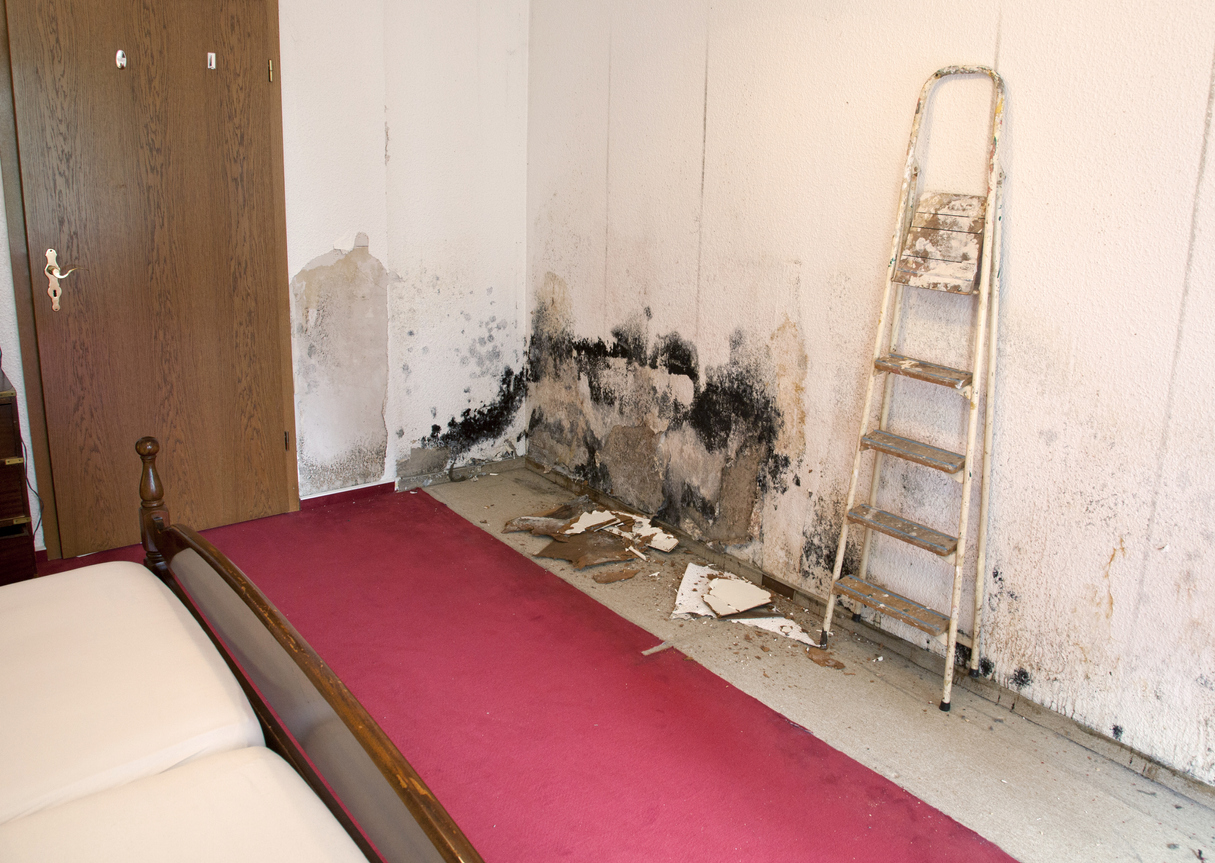
First, locate the mold in your home. Black mold can be identified by its often-slimy texture, dark-greenish/black, sometimes gray, color, and growth that appears as spots or patches that spread over time. Common places black mold grows include corners, covered areas under sinks or cupboards, baseboards, under cardboard boxes in the basement, and anywhere else with high levels of moisture. Pay attention to your nose, and follow the musty scent of black mold to locate the source. A flashlight will help you inspect nooks, crannies, and dark corners.
Moisture is almost always at play, as it gives mold the ideal environment in which to grow. This checklist should help you find the affected area:
- Kitchen areas, including under and behind sinks and sink cabinets
- Bathroom tubs, showers, and toilets
- Around appliances such as dishwashers, refrigerators, and air conditioners
- Cardboard boxes in basements and garages
- Around leaky windows
- Around exterior entry doors without overhangs or porches
STEP 2: Mix your mold killer.
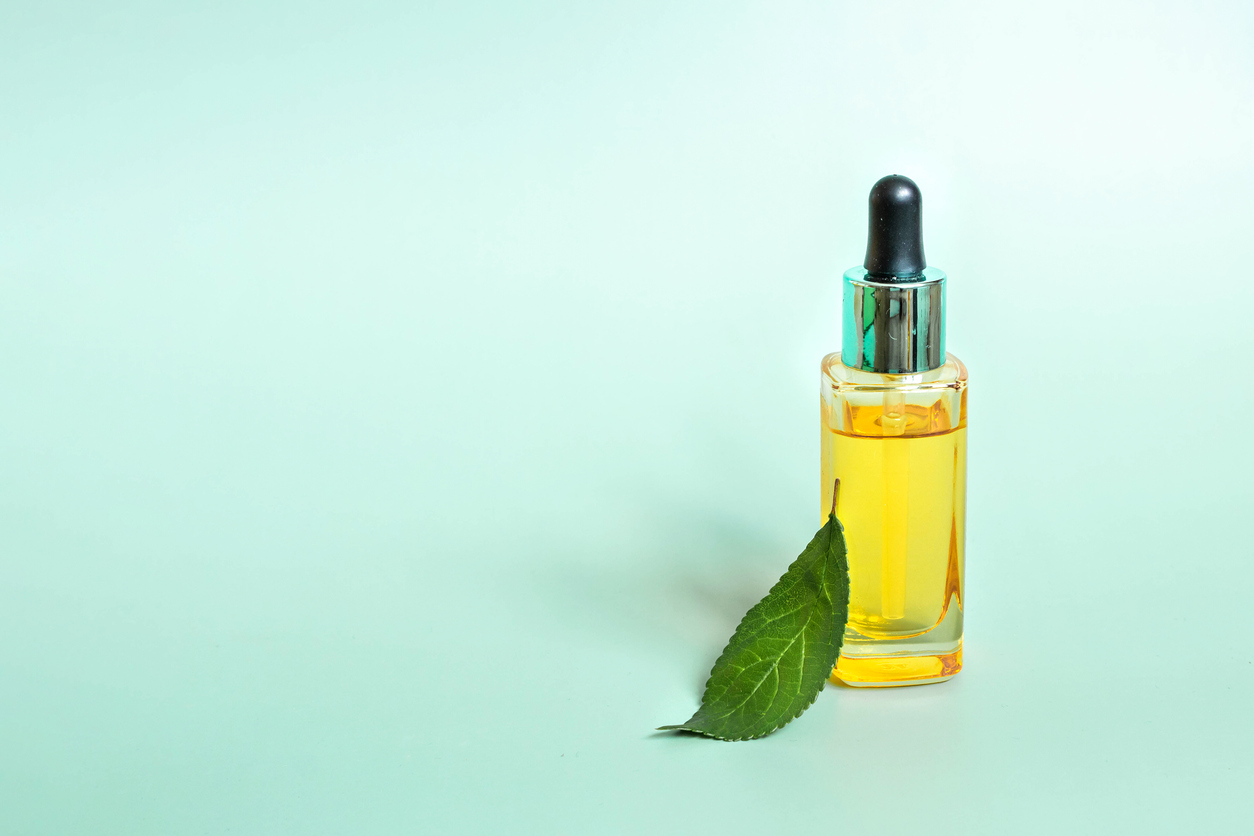
Once you’ve spotted the offending growth, you might be asking, “What kills black mold?” While plenty of agents can fight mold (Borax, vinegar, bleach, and ammonia, to name a few), tea tree oil and grapefruit seed extract are often considered the most effective treatment for mold, disinfecting and deodorizing the problem area. Moreover, they’re completely nontoxic. You can purchase tea tree oil online and in health stores; just ensure that it’s from melaleuca alternifolia (an Australian tree) and that its active ingredients include 30 percent terpinen-4-ol and no more than 10 to 15 percent cineole. Grapefruit seed extract may be slightly less effective but easier to find, also available from these sorts of retailers.
For every one cup of water the spray bottle holds, add a teaspoon of either tea tree oil or grapefruit seed extract. Both of these essential oils have a long shelf life, so as long as the spray bottle can be turned to an “off” position for air-tightness, the solution will last for at least a year.
STEP 3: Suit up with protective gear.
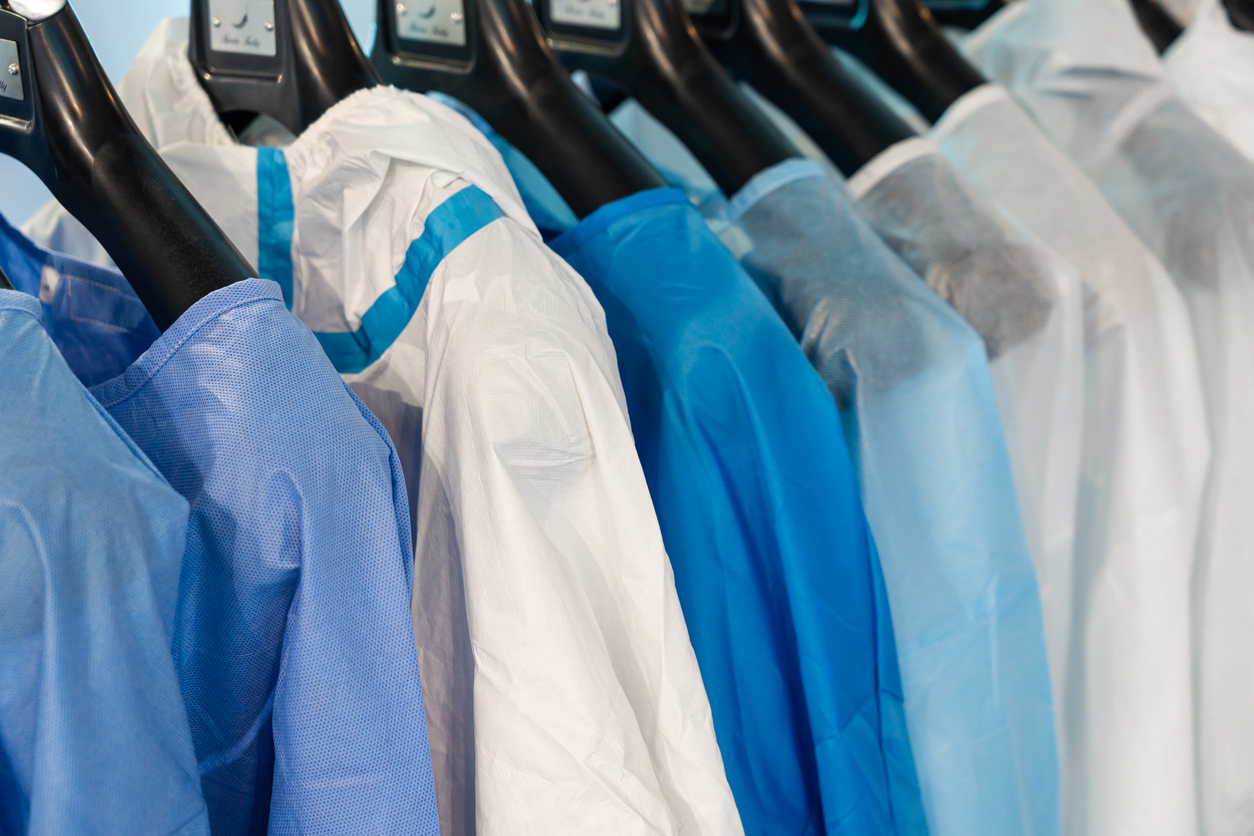
Before removing any black mold, gear up: Don disposable coveralls, rubber gloves, airtight safety goggles, and a face mask or respirator. This protective gear will reduce the risk of health issues that may result from exposure to the substance, including respiratory infections, allergic reactions, joint inflammation, and rashes. Because a single black mold spore hitting your eye can even induce blindness, you don’t want to cut any corners.
This is also a good time to hang plastic sheeting to separate the affected room from the rest of the house. If there is a HEPA filter available, set that up as well.
STEP 4: Spray on the solution and let it sit.
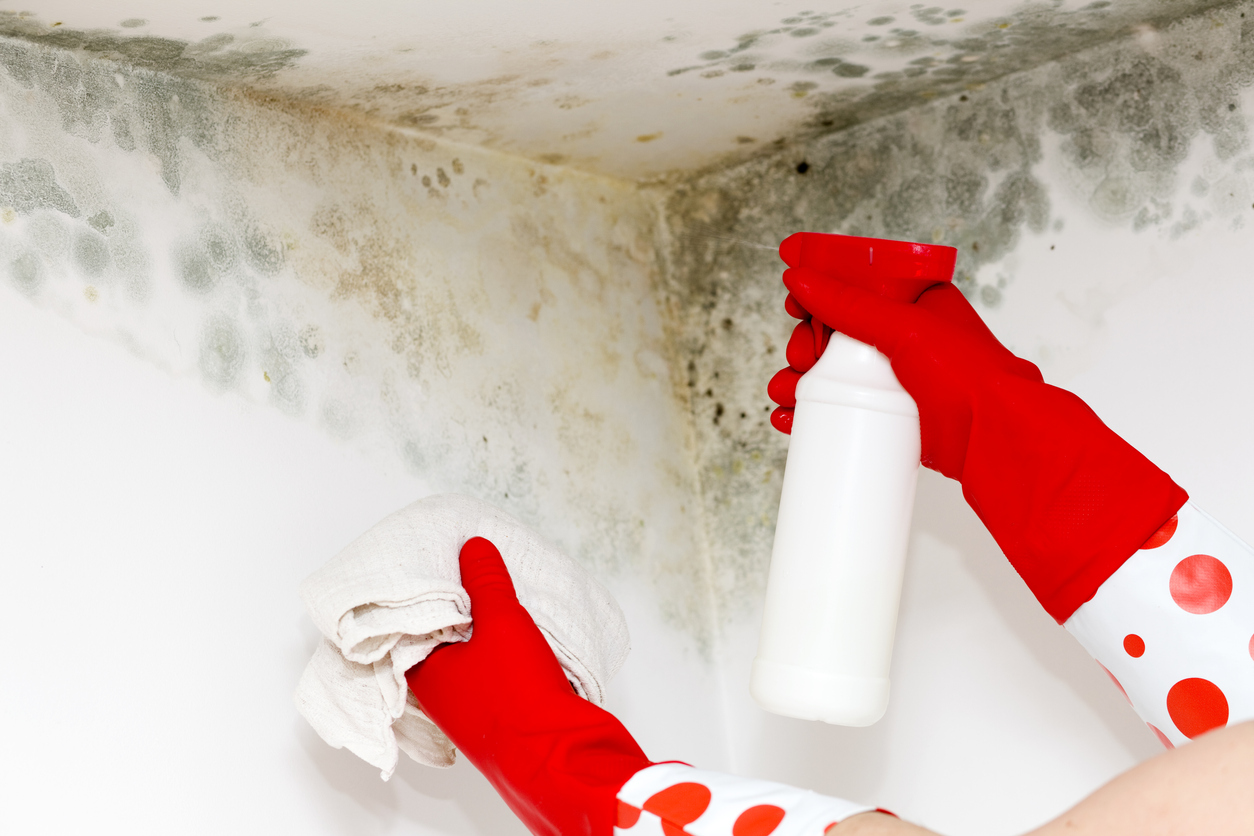
You’ll need the solution of essential oils to get rid of black mold. Thoroughly shake the spray bottle of mold-mitigating solution, then spray the affected area so it’s well-saturated. (Continue to shake the bottle repeatedly during this process in order to ensure the solution stays well mixed.) Allow the liquid to sit on the mold for 5 to 10 minutes so the antibacterial properties have time to work through the grime.
Pro tip: Never, ever scrape dried mold. This action will cause the spores to become airborne, spreading toxins into the air and causing negative health effects.
STEP 5: Scrub the affected area carefully.
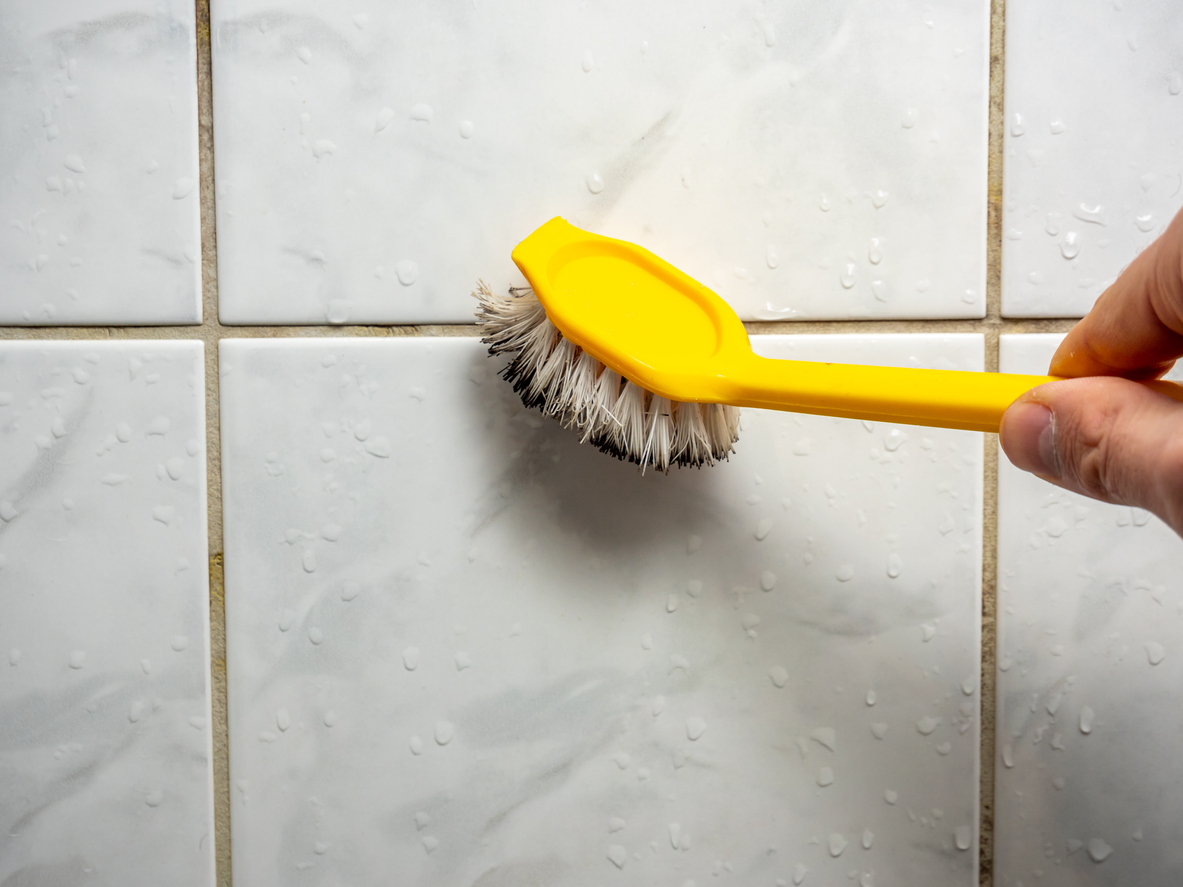
Take a nylon bristle brush and scrub the surface area to lift and unsettle the dampened mold. Move the brush in careful, strong strokes so you aren’t splashing the mold on the surrounding areas—even dead mold spores can be an allergenic health issue. After scrubbing thoroughly with the brush, wipe the area clean with old rags or paper towels.
It can be a good idea to wipe the area as you go to prevent puddles of mold spores from running under trim or into the floor.
STEP 6: Repeat Steps 4 and 5 if necessary.
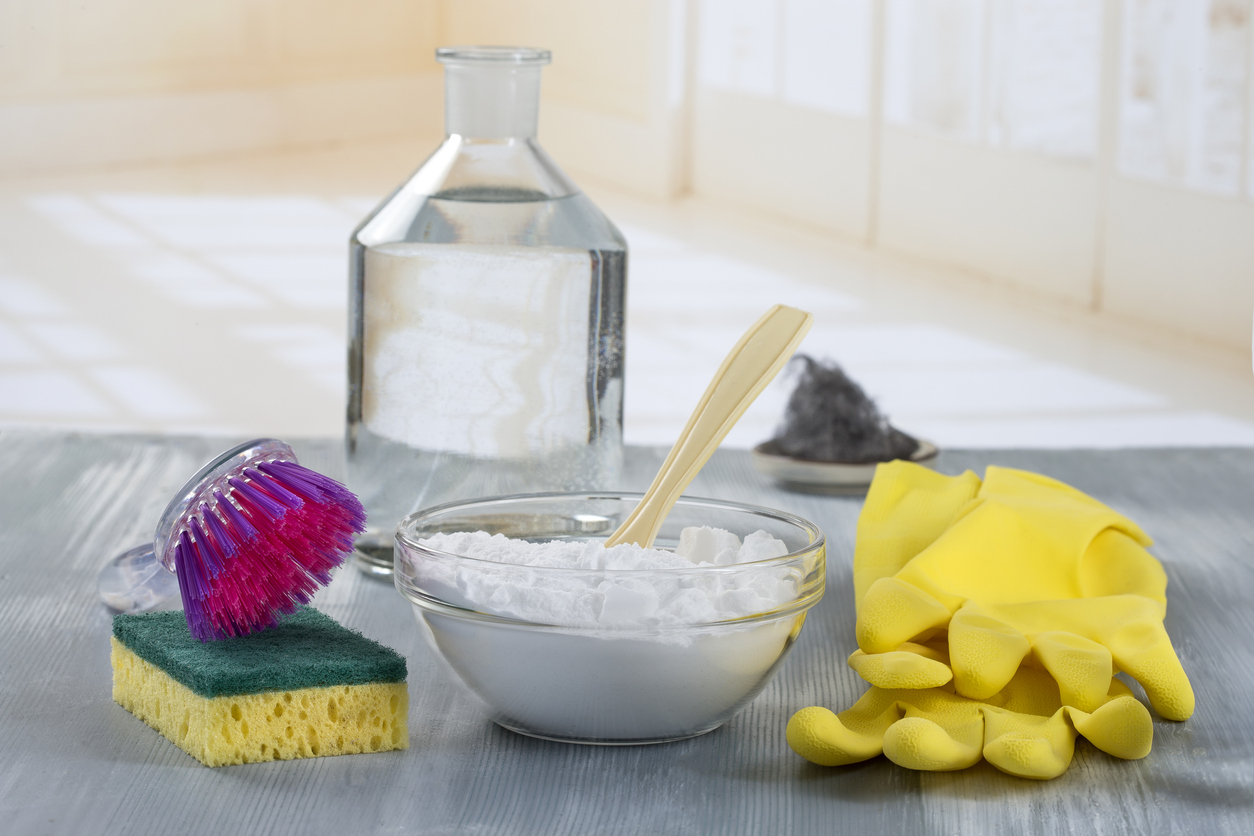
It might be necessary to repeat steps 4 and 5 to successfully get rid of black mold. A light stain may remain after you’re through, but as long as you’ve cleaned the surface thoroughly, the mold should be properly killed.
For those stains, a bit of baking soda and vinegar can do the trick. Simply mix a solution of one-part baking soda to two-parts vinegar and scrub the stained area with a brush. Also, there are special paints and primers available that can handle the job. These primers will not only cover the stains but also prevent mold from reoccurring in the future, though you’ll need to wait until the surface is completely clean.
STEP 7: Spray the mold one last time and let it sit.
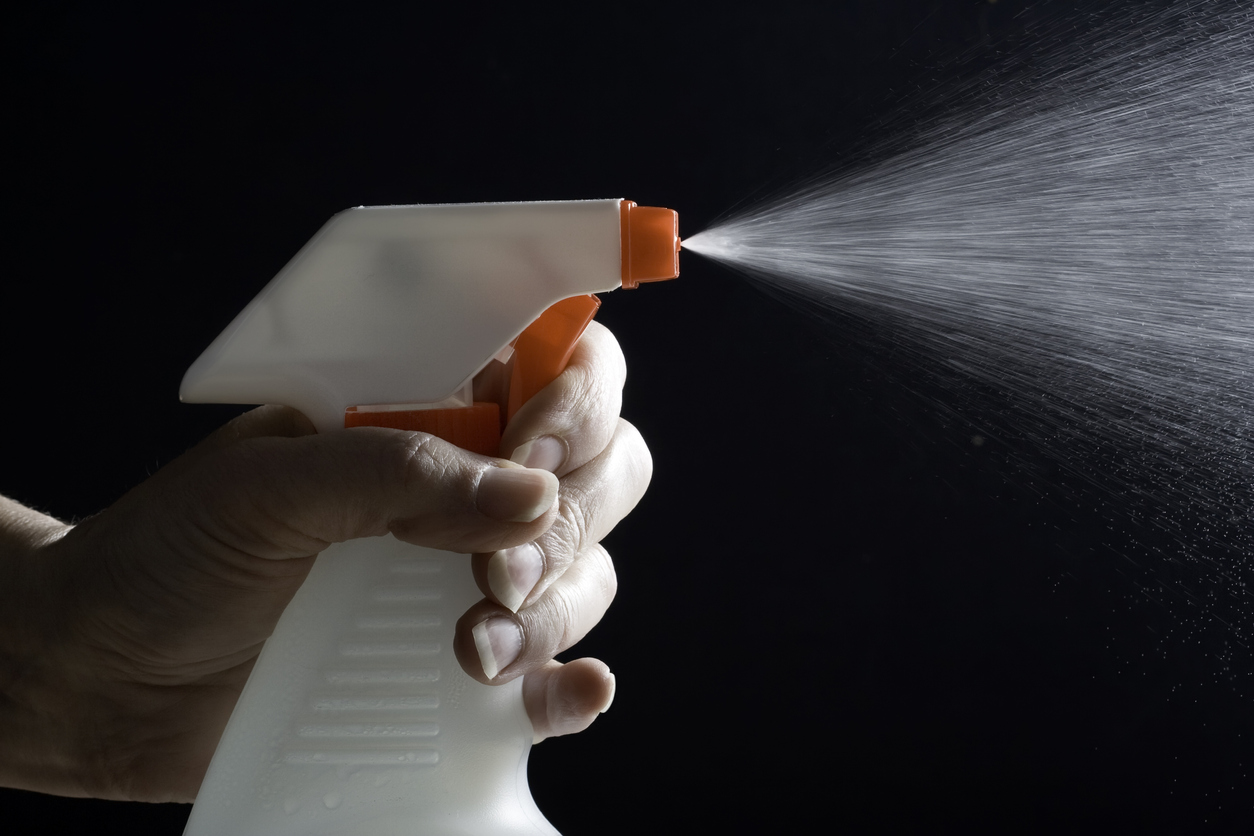
Do not rinse the area with water, since the tea tree oil and grapefruit seed extracts are mold-fighting agents that help prevent mold’s return. You want those oils to remain present for as long as possible.
Instead of water, shake the bottle of solution and give the mold-infested area a final light spray. Letting the solution air-dry allows the oils to remain behind and fight mold.
STEP 8: Clean up and take out the trash.
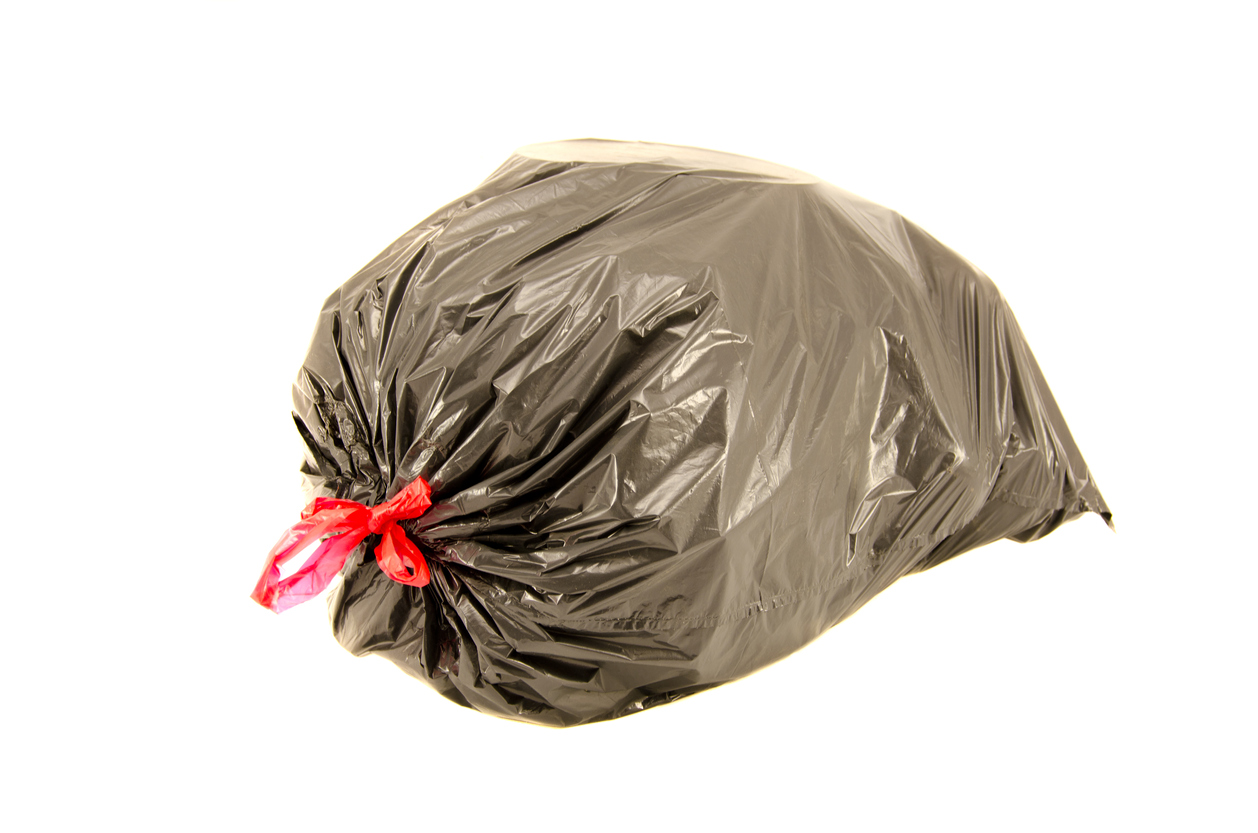
Understanding how to clean black mold and the materials used to kill it is straightforward. Dispose of the coveralls and paper towels in a plastic bag, which you should tightly seal before taking out the trash. Wash soiled rags and the nylon scrubber in hot water, or throw them away with the coveralls and paper towels as an extra precaution.
Remember, mold is naturally occurring. It may return. To tackle a few random spots of a fresh resurgence, it’s not necessary to don coveralls. Instead, grab a mask, goggles, gloves, and the leftover mold-killing solution, then proceed from Step 3 onward.
STEP 9: Conduct a mold test to confirm the mold is gone.
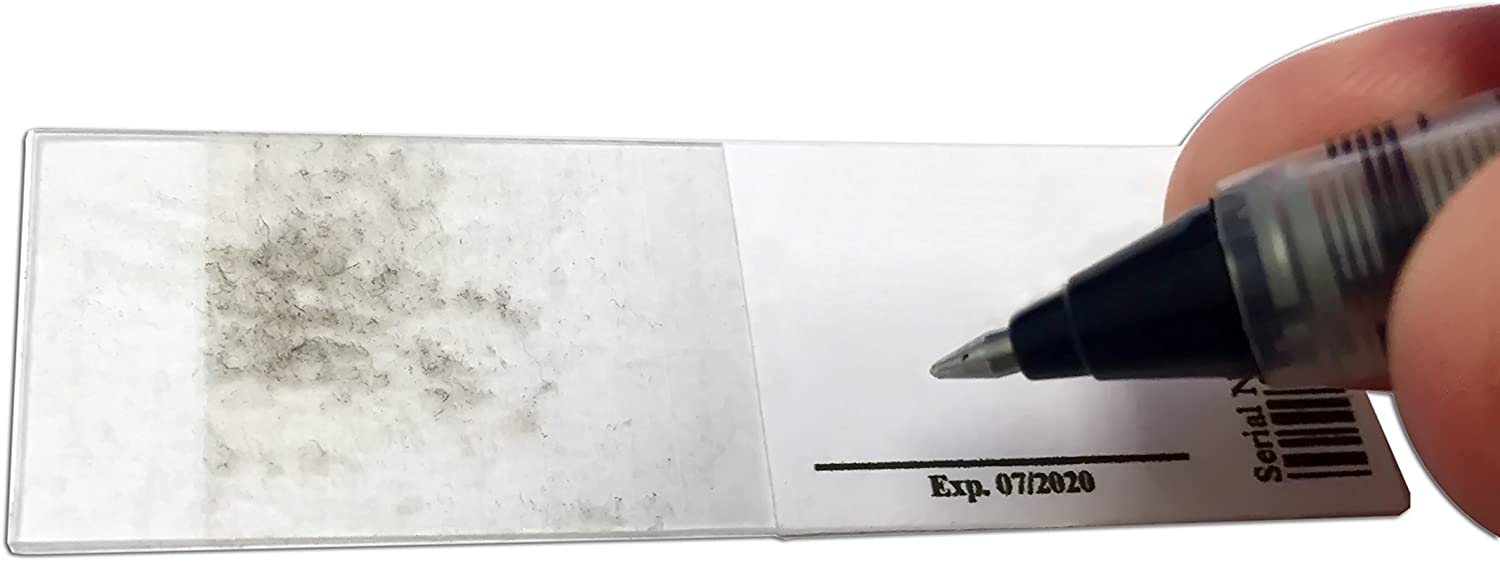
To be certain that you were able to get rid of black mold, consider purchasing an at-home mold test kit. These kits are often available for less than $50, and they can test for mold present in your home over the course of several days. And, should mold be present, you can send the results of the test to a specialized lab that can determine the type of mold and its severity.
Most experts suggest testing for mold annually, though there are circumstances that can warrant more frequent testing:
- After an appliance leak
- Prolonged, extremely wet weather
- After discovering leaking fixtures
Final Thoughts
Leaving a black mold infestation untreated is a recipe for disaster. Not only will it consume every organic material it can, but it will also cause serious health effects.
While the substance is intimidating and dangerous, learning how to get rid of black mold isn’t so difficult. With the right protective equipment, cleaning supplies, and know-how, removing this naturally occurring threat is entirely doable. As long as you maintain an eye for personal safety and know how big of a job a DIYer can handle, you can get rid of black mold on your own.
FAQs About Black Mold Removal
That’s a lot of information on how to get rid of black mold, but there could still be some deep-rooted questions. The following includes some of the most frequently asked questions on the topic.
Q: What kills black mold instantly?
There aren’t any household products that kill black mold instantly, but there are several that do an excellent job with a bit of brushing and wiping. However, most mold remediation requires several applications.
Q: Is it safe to live in a house with black mold?
Black mold is not safe; however, the size of the infestation determines whether or not the house is habitable. Professional mold remediation services are suggested for infestations over 10 square feet in size.
Q: What’s the difference between mold and mildew?
Essentially, mildew grows on top of flat surfaces, whereas mold burrows itself into the pores of a surface. Mildew is often easier to remove and less dangerous than mold.
Q: How do you get rid of black mold on wood?
The steps above are applicable for wood, but a quick run-down includes:
- Donning protective gear and cordoning off the area
- Spraying mold-remediation solution on the mold
- Scrubbing with a bristle brush
- Wiping up the runoff
It may take several applications to remove mold on wood, as it’s very porous and the mold will likely burrow deeply inside.
Q: How do you know if mold is making you sick?
If you’re feeling ill, an at-home mold test can help determine the cause. Look for these symptoms, among others:
- Cough
- Runny nose
- Headache
- Fatigue
- Flu-like symptoms

